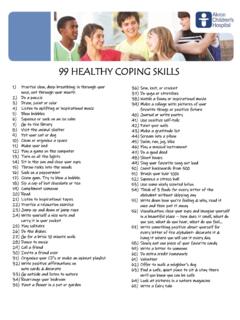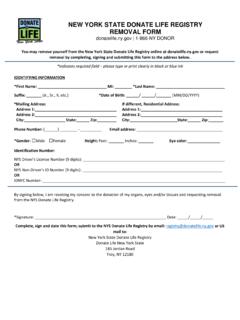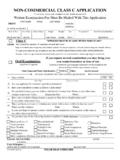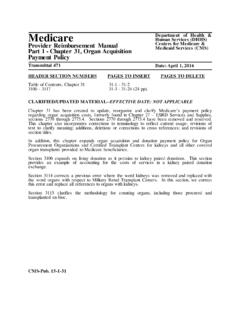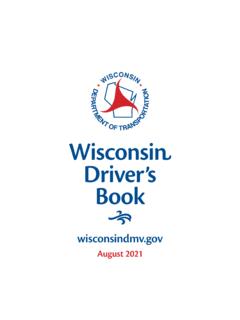Transcription of Blood Bank Guidelines and Procedures - Akron Children's ...
1 POLICY TITLE. Blood bank Guidelines and Procedures POLICY # VERSION CATEGORY SUB-CATEGORY. Medical Staff Only -Choose 10037 13 Organizational Choose a Policy Type. a Policy Type KEY WORDS Divisional Professional Services Choose a Policy Type 10037. Pathology & Laboratory Departmental Clinical Medicine CURRENT EFFECTIVE DATE: 10/18/2019 THIS POLICY REPLACES: LAST APPROVAL DATE: 7/29/2014 Click here to enter text. ORIGINAL DATE: 1/1/1997. APPLICABILITY: Akron Children's Hospital & Affiliates Children's Home Care Contact Person/Position: Christopher J. Klonk, MD/ Blood Pages: 13. bank Medical Director SPECIAL REVIEW ADMINISTRATIVE REVIEW.
2 Environment of Care/Safety Medical Staff Administrative Staff Health Information Nursing Guidelines Board of Directors Management Human Resources Patient Services Interdisciplinary Care Committee Infection Control Pharmacy & Therapeutics Medical Staff Executive Committee Information Services Radiology Click here to enter text. Laboratory/Pathology Click here to enter text. References and Accreditation Standard: 1. Stehing L, Luban N, Anderson K et al: Guidelines for Blood utilization review. Transfusion 1994;34:438-448. 2. Hess JR, Hippala S: Optimizing the use of Blood products in trauma care.
3 Critical Care 2005; 9(Suppl5): S10-14. 3. Wanko SO, Telen MT: Transfusion management in sickle cell disease. Heme/Onc Clinic NA 2005; 19:803-826. 4. Technical Manual of AABB: Noninfectious and infectious complications of Blood transfusion, 17 th Ed, AABB Press, 11 , pg 727-757. 5. Sanchez R, Troy P: Transfusion related acute lung injury: a pediatric perspective. Pediatr Blood Cancer 2005; 45:248-255. 6. Modern Blood Banking and Transfusion Practices, 5 th Ed, Davis Company, 2005. 7. Practice Guidelines for Blood Transfusion, 2 nd Ed, American Red Cross, 2005. 8. AABB Technical Manual, 18th ED, 2014.
4 9. Lacroix, Jacques et al: Transfusion Strategies for Patients in Pediatric Intensive Care Units. NEJM 2007; 356: 1609-1619. APPROVAL APPROVAL. Melinda Spoerke Christopher J. Klonk, MD Blood bank Senior Technologist Blood bank Guidelines and Procedures , Version 13, Minor, 6/25/2020. Medical Director, Blood bank PURPOSE: The Blood bank of Akron Children's Hospital provides transfusion services and consultation in immunohematology and transfusion medicine for all clinical and surgical areas at Akron Children's Hospital Main Campus. POLICY: Specimens There is no place in the laboratory where specimen identification is more important than in the Transfusion Service.
5 The transfusion of Blood is a tissue transplant and subject to many of those limitations and legalities, one can better keep in perspective the possible dangers. Rules for Blood banking are established through the Federal Food and Drug Administration (FDA), the College of American Pathologists (CAP), and other accrediting agencies and will be rigidly followed. Specimens for any tests done by the Transfusion Service will not be drawn unless the patient has an identification wristband in place. Specimens for any tests done by the Transfusion Service must be labeled properly with the following information before any test will be performed and must be accompanied with the Blood bank Requisition.
6 Patient's first and last name Medical record number or date of birth Date when specimen drawn Collector's employee #. Blood bank Requisition ALL Blood bank specimens must be accompanied by a signed Blood bank Requisition. Two signatures are required: collector's signature with employee number and the witness signature with employee number. The requisition must be signed at the time of collection. The Pertinent Patient History and Transfusion History sections along with the desired testing and Blood Product selection must be filled out by the Ordering Provider, who also must sign the form (electronically in EPIC or manually on a Blood bank requisition).
7 These requisitions need to be completely filled out in order to be processed. Indications for Transfusion of Blood Products These are Guidelines and are not intended to serve as exclusive or all-inclusive medical indications for transfusion. Transfusions may be indicated in additional clinical situations not falling within these indications listed below. Whole Blood : (Note: it usually takes at least 3 days to obtain whole Blood ) very few indications for whole Blood . Blood bank Guidelines and Procedures , Version 13, Minor, 6/25/2020. Packed Red Blood Cells (PRBC): Transfusion Guidelines for PRBCs in Infants Less than 4 Months of Age 1.
8 Hemoglobin < 7g/dl with low reticulocyte count and symptomatic anemia (tachycardia, tachypnea, poor feeding). 2. Hemoglobin < 10g/dl and any of the following: a. On <35% oxygen hood. b. On oxygen by nasal cannula. c. On continuous positive airway pressure and/or intermittent mandatory ventilation on mechanical ventilation with mean airway pressure <6 cm of water. d. With significant tachycardia or tachypnea (heart rate >180 beats/minute for 24 hours, respiratory rate >80 beats/minute for 24 hours). e. With significant tachycardia or bradycardia (>6 episodes in 12 hours or 2 episodes in 24.)
9 Hours requiring bag and mask ventilation while receiving therapeutic doses of methylxanthines). f. With low weight gain (<10 g/day observed over 4 days while receiving 100. kcal/kg/day). 3. Hemoglobin < 12 g/dl and either of the following: a. On >35% oxygen hood. b. On continuous positive airway pressure/intermittent mandatory ventilation with mean airway pressure 6-8 cm of water. 4. Hemoglobin <15 g/dl and either of the following: a. On extracorporeal membrane oxygenation. b. With congenital cyanotic heart disease. Transfusion Guidelines for RBCs in Patients >4 Months of Age: 1. Hemoglobin < 7g/dl a.
10 Asymptomatic hemodynamically stable non-trauma patients without ongoing Blood loss, medical issues, hemoglobinopathies, coagulopathies, and cardio-respiratory abnormalities who are not about to undergo a homeostatic challenge should be considered for transfusion only if they are less than or equal to a hemoglobin of 7g/dl. However if their hemoglobin is less than 10g/dl it would be prudent to have a valid type and screen or type or type and cross in the event that they do drop lower. b. Emergency surgical procedure in patient with significant postoperative anemia. c. Preoperative anemia when other corrective therapy is not available.
